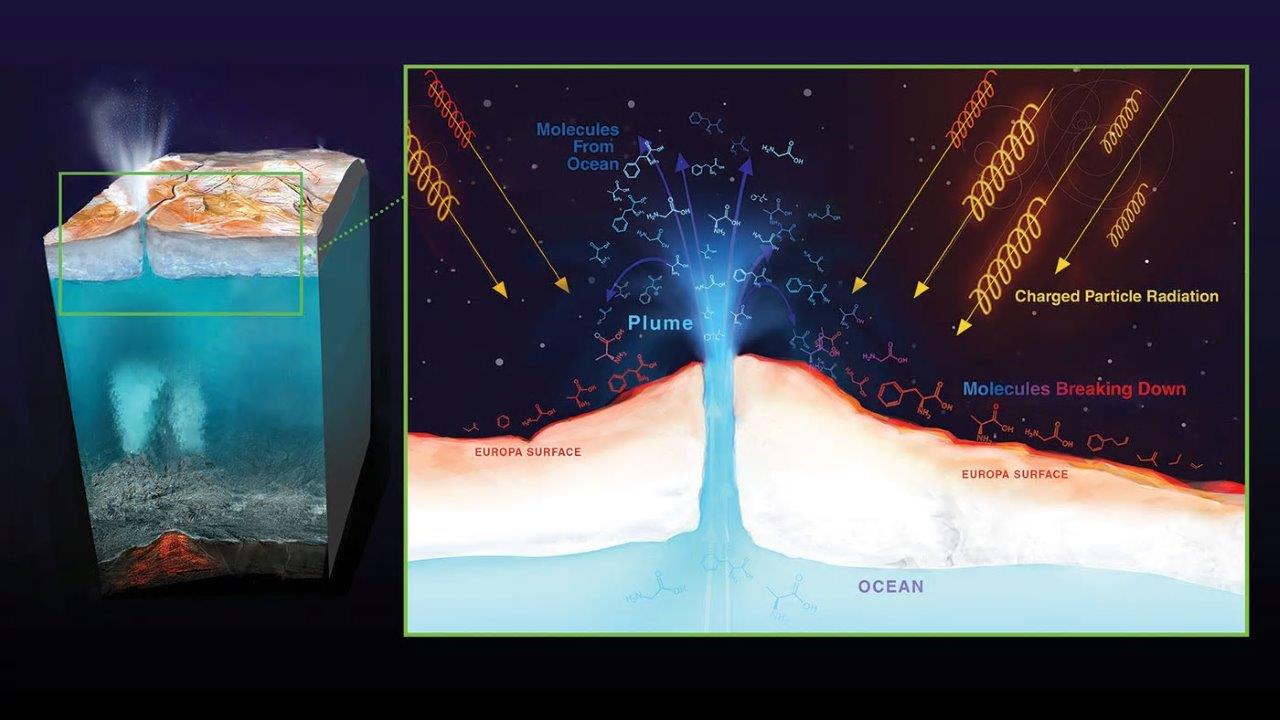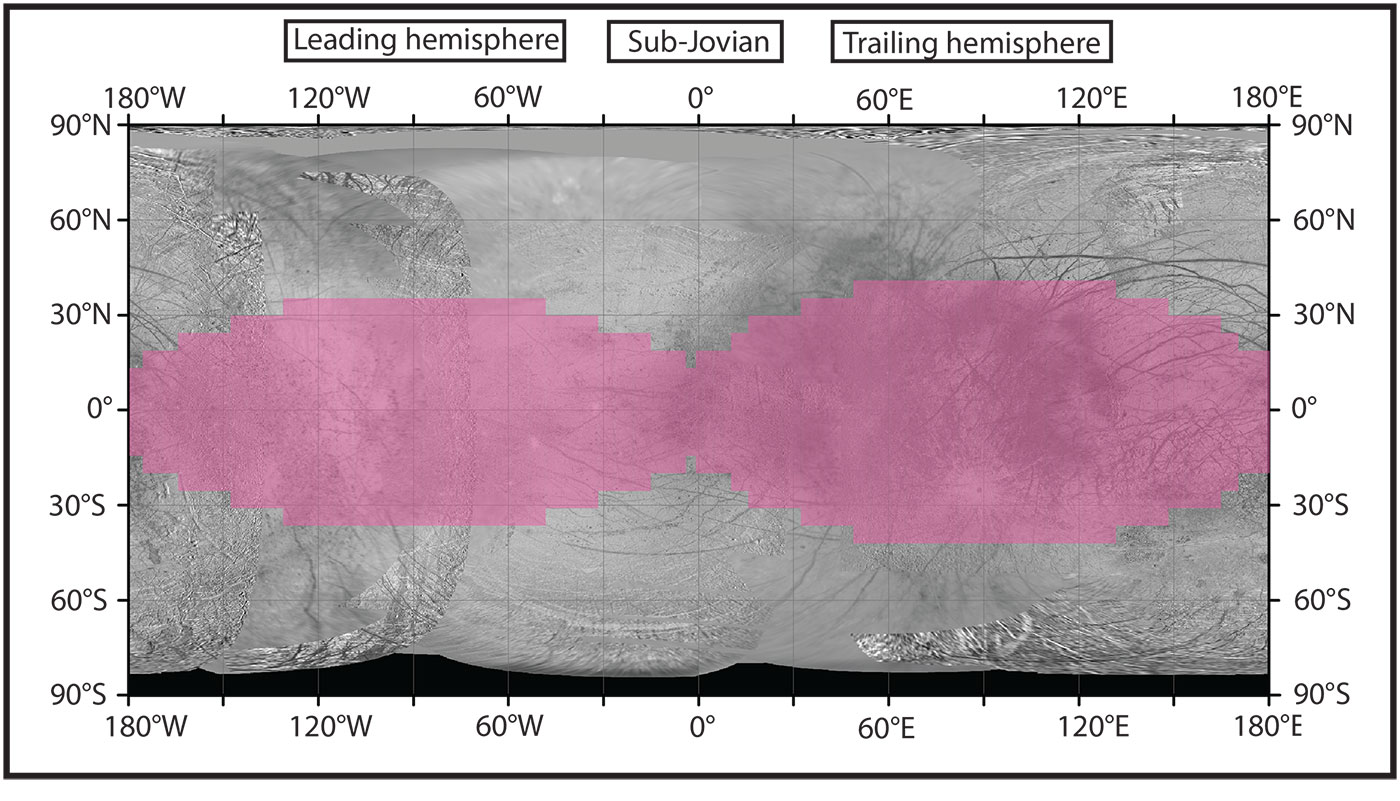News about maps
Digital cartography and GPS navigation
Mapstor news
This Day in History
Travelling with mapstor.com
Digital cartography and GPS navigation
115 years of flight
Next-generation of GPS satellites are headed to space
DJI Phantom 4 RTK - cartography of a new generation
Earthquake prediction systems
OneSoil map
Maps of Jupiter radiation - the key for new research of Europe

A new comprehensive mapping of radiation bombarding the moon of Jupiter-Europe shows where and how deeply scientists should continue to search for biological activity.
Since the Galileo mission of NASA has provided convincing evidence of the existence of a global ocean under the ice cover of Europe in the 1990s, scientists believe that the moon is one of the most promising places in our solar system to find ingredients for the birth of life. There is also a mass of observations of how salty water circulating in the lunar bowels breaks to the surface.
Studying the information more detailed, scientists who are developing future missions hope to learn more about the possible habitation of the ocean of Europe. However, the surface of Europe is bombarded by the constant and intense radiation of Jupiter. This radiation can destroy or change samples transported to the surface, which makes it difficult to follow the materials, violates the truth of the concept of conditions in the ocean of Europe.
Planning forthcoming study of Europe, scientists have come across many unknowns: where is radiation most intense? How deeply do high-energy particles penetrate? How radiation affects what is on the surface and below - including potential chemical signs or biosignals, which can mean the existence of life.
A new scientific study, published today in Nature Astronomy, is the most complete modeling and mapping of radiation across Europe and it offers key fragments of the puzzle. The leading author is Tom Nordheim, a research associate at the NASA Jet Propulsion Laboratory, Pasadena, California.
"If we want to understand what is happening on the surface of Europe and how the ocean reacts below, we need to understand this radiation," Nordheim said. "When we study materials extracted from the subsurface layer, what do we eventually see? Is that what is in the ocean, or the result of what happened to the samples after they were extracted to the surface? "

The surface map of Europe shows the areas that receive the highest dose of radiation (pink). US Geological Survey, NASA / JPL-Caltech, Johns Hopkins Applied Physics Laboratory, Nature Astronomy
The revealed severe zones appear in the form of oval-shaped regions connected at narrow ends that cover more than half the moon.
"This is the first prediction of radiation levels at every point on the surface of Europe and is very important for future missions to Europe," said Chris Paranikas, co-author of the Johns Hopkins Laboratory of Applied Physics in Laurel, Maryland.
Now scientists know where the regions that are least modified by radiation are, which may be important information for Europa Clipper company, headed by JPL, NASA mission in Jupiter's orbit and Europe monitoring with about 45 close spans. The spacecraft can start as early as 2022 and will carry cameras, spectrometers, plasma and radar instruments to study the composition of the surface of the moon, its ocean and the material thrown to the surface.
Using the data received from Galileo two decades ago and the electron beam measurements produced by the NASA Voyager 1 ship, Nordheim and his team examined in more detail the radiation nuances that are falling on the surface of the satellite of Jupiter. They found that the radiation doses depend on the location of the place where the measurements were taken. The strongest radiation is concentrated in the zones around the equator, and its intensity decreases closer to the poles.
In his new work, Nordheim did not stop on a two-dimensional map. He went deeper, measuring how far the radiation penetrates under the surface, and building 3D models of the most intense radiation to Europe. The results tell us how deeply scientists must dig or drill during a potential future landing mission in Europe to find any biological signs that can be preserved.
Studies show results that range from 4 to 8 inches (10 to 20 centimeters) in areas with the highest radiation - to a depth of less than 0.4 inches (1 centimeter) in the regions of Europe at medium and high latitudes to the poles of the moon.
To arrive at this conclusion, Nordheim experienced the effect of radiation on amino acids, the basic building blocks for proteins, to find out how the radiation of Jupiter will affect potential bioprospects. Amino acids are among the simplest molecules that qualify as a potential biological indicator, the newspaper notes.
"The radiation that bombards the surface of Europe leaves a kind of fingerprint," said Kevin Rook, co-author of new studies and project specialists for the potential Europa Lander mission. "If we know what this fingerprint looks like, we can better understand the nature of any organic matter and possible biosignalsthat can be detected in future missions, whether they are space vehicles that fly to Europe or "land" on it.
Digital cartography and GPS navigation 04-08-2018


